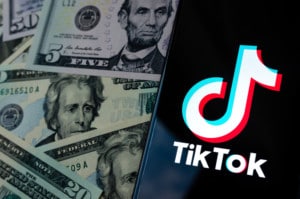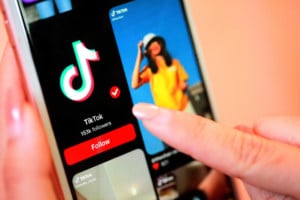
As Q4 approaches, retailers are preparing for the most lucrative holidays of the year. With sales escalating, brands must anticipate and manage considerable demand. Effective Q4 planning occurs on both DTC and marketplace channels, aligning internal teams to strategize and consolidate initiatives. Preparations are comprehensive and include managing catalogs, merchandising, inventory, advertising, and marketing.
How can you maximize these areas to drive sales and revenue during Q4?
On this year’s July Prime Day, consumers searching for discounts and perks at accelerated rates were detected, with this trend expected to continue throughout the Q4 holidays. Meeting these demands requires refining product content to generate conversions. Since Amazon has prolonged the content approval process, updating content before the start of Q4 is crucial. This may include researching the latest keywords, modifying images and videos for new product launches, and highlighting promotional pages.
As Amazon becomes more profit-driven, brands have evolved strategies to optimize their catalogs and merchandise. As you develop content, consider promoting overstocked items on Vendor Central and DTC. This creates additional inventory space for next year’s new products, prompting Amazon to restock items. New product launches in previous years have focused on secondary items to initiate awareness. As retailers prioritize conversions, these launch tactics have shifted to promoting best-selling products for new customers, then advertising and selling auxiliary merchandise through DSP retargeting. Another profitable launch approach involves creating custom holiday bundles in advance to boost average order value. These offers should be supported with banner ads at the front of your Amazon page.
After finalizing your budget and forecasting promotional offers, restocking your inventory to support these strategies is vital. To avoid shortages and inbound restrictions, ship 20% more than your estimated inventory in advance. Incremental sales often arise from promotional initiatives like Buy with Prime and TikTok Shop, disrupting your warehouse operations, so acquiring temporary staff ensures you can anticipate demands and stay on top of shipping cut-off dates.
Brand loyalties are shifting, and with 82% of consumers switching retailers for preferred value, businesses must employ branded and conquest campaigns to protect market share and outperform the competition. This increased spending results in tight budgets for Q4 advertising.
So what techniques can you leverage to enhance advertising value on Amazon and DTC?
DTC platforms offer numerous advertising tools that brands leverage simultaneously at the start of Q4, leading to platform glitches and campaign collapses. Rather than waiting until the fall holidays to launch campaigns, run ads beforehand while developing your Q4 objectives. If launching a last-minute campaign, ensure that you monitor and recover the ads immediately. With longer shipping times, DTC sales decline by the second week of December, so driving purchases immediately following Black Friday guarantees a profitable Q4.
Brands are adjusting their Amazon advertising bids and budgets to compete with aggressive CPC campaigns. Once the holiday season arrives, analyzing campaign performance becomes increasingly challenging. Additionally, Amazon’s algorithms support frequently launched campaigns, so conduct testing before the holiday season to run campaigns successfully without interruptions.
Lifecycle Marketing Tips for Q4
According to Nicole Reich, Blue Wheel’s Chief Growth Officer, “73% of consumers expect brands to understand their unique needs and expectations.” Lifecycle marketing — including email and SMS campaigns — plays a critical role in customer personalization, encouraging repeat purchases and loyalty. These marketing efforts should drive 30% of your DTC revenue, so segment your audiences to target consumers through email suggestions, build personalized workflows, and establish exclusive deals for VIPs or engaged subscribers.
Repurposing Creative Campaigns for the Holidays
Nicole also notes that “41% of consumers find ads displaying relevant products or discounts most influential in their purchasing decisions,” so retailers must produce engaging, creative video content on TikTok and Instagram. For efficiency and relevancy, record one comprehensive video emphasizing product functions for use across DTC and Amazon. This video can be segregated into short-form clips for various promotions and discounts. You can also test multiple versions of the same campaign, revising and improving your strategy as you see fit.
With these tactics, you can create an extensive checklist to prepare your operations for a profitable Q4 holiday season.

Omnichannel eCommerce has gained widespread recognition and adoption in recent years as brands look to offer customers a unified experience. As these capabilities progress, content creation has emerged as a pressing concern for many brands — especially with the development of new digital platforms like TikTok — so altering your content strategy to meet audiences where they are is crucial for a valuable marketing campaign.
So how can you develop creative content for various digital mediums?
Traditional content forms are designed to build brand equity using a comprehensive storyline or campaign. While typically long-form content, these productions can be deconstructed into shorter segments of the same concept and launched onto a single platform. Conversely, digital-first creative content extends beyond a brand equity approach and encompasses multiple channels to optimize the marketing funnel. This performance-driven method employs diverse content and advertising forms to focus on value proposition rather than brand equity.
What should you consider when optimizing content for digital platforms?
When developing an omnichannel creative strategy, you must align your advertising and marketing priorities with your selected channels. Lindsay Kean, Blue Wheel’s Senior Director of Creative Services, explains that a holistic omnichannel approach requires “looking at all of the different channels, their hierarchy of needs, and then being able to take those needs and put them into a full-funnel approach of what type of content, what part of the funnel, and what different channels are a priority.” It’s crucial to ascertain the ideal content for each platform. For instance, photography GIFS and short-form video content perform positively on TikTok. Soundless videos are best utilized on Meta, whereas platforms like YouTube are sound-dependent. Product-specific advertising can be executed on Amazon through lifestyle photography and holiday content promotions. No matter your content creation strategy or the platforms you leverage, each campaign must provide value to reach a diverse audience sifting through endless feeds of related content.
Optimizing Digital Content by Tapping Into Full Funnel Marketing
The marketing funnel is fundamental to driving engagement and conversions, and curating content for various stages of each digital platform’s funnel enhances your advertising efforts. Generally, the customer journey has three phases: awareness, consideration, and conversion. Product introduction and walk-through videos, UGC content, and brand anthems promote awareness by informing consumers of your brand. As customers consider your products, you can employ problem and solution approaches through unboxing videos demonstrating how the product solves a foundational issue. Promotional messaging, such as call-to-actions, encourage click-throughs and drive conversions.
Creative content often holds a high production value, so some brands are hesitant to transition to digital. But excess content from traditional campaigns can be recycled and employed in digital mediums. Instead of recreating content, you can combine assets, including previous photo and video shoots and UGC influencer content, to convey a cohesive story that aligns with brand goals and emphasizes digital-first.
An alternative strategy involves repurposing conventional social media ads to obtain a greater Thumbstopping rate, which measures audience engagement. Standard video ads are often lengthy, lack hooks, and have limited on-screen text, diminishing performance. An effective Thumbstopping video is five seconds and relays a captivating brand story that captures audiences’ attention within the first three seconds.
Reusing creative content requires careful consideration of digital engagement techniques and marketing funnel and channel goals.
Since digital creative emphasizes performance-based metrics, understanding precise measurements and experimentation methods is crucial to success. Many of the same metrics utilized in traditional campaigns apply to digital creative, including KPIs, ROAS, and CPA (cost per acquisition), but differ based on funnel and channel objectives. Digital campaigns should also incorporate granular measurements to assess the rationale behind performance ratios. This may involve evaluating likes, follows, shares, and comments for organic social, helping you understand customer value and plan for future campaigns.
Testing is a key component of the creative planning stage and can be executed in two approaches: iterative and phase testing. Brands with a large monthly ad spend can produce multiple content iterations and compare them against each other to assess their performance. For instance, you can employ various personas within the same ad to determine audience interpretations. Additionally, developing different versions of Thumbstopping videos allows you to evaluate metrics on each one and adjust your approach based on the data. Phase testing is useful for brands with a lower monthly spend and entails releasing content following production, gauging its effectiveness, and tweaking or repurposing it according to the results.
Planning is especially effective when involving the entire organization. This ensures all digital assets are arranged and in alignment with business goals. Blue Wheel’s VP of Sales and Marketing, Nicole Reich, stresses the importance of company-wide participation, “So I have found in some companies that the more you pull in other teams early on to plan, the better… But then also having someone take the lead and saying, ‘I’m accountable for knowing that we have all the resources, the assets that we need, and I know who to go to understand their wishlist.’”
To capitalize on digital assets, you must plan your productions, determine the content you need to produce and the platform to advertise on, and develop messaging unique to each content form and channel.

With Amazon as the leading digital marketplace, brands are looking to optimize sales on its platform. Historically, sellers have developed separate budgets, goals, and advertising strategies for Amazon and DTC, creating silos and cementing the reputed digital divide between channels.
However, “Over the last six months…36% of the Amazon users going to product detail pages actually come from offline sources,” says Blue Wheel’s VP of Sales and Marketing, Nicole Reich. This indicates that consumers are either directed to Amazon by influencers or start their searches on other websites.
So how can you integrate your Amazon and DTC efforts to develop an omnichannel strategy that enhances the customer journey?
Merging Amazon and DTC channels helps establish comprehensive marketing tactics that maximize visibility on both sites. Segregated advertising limits your efforts to one channel, hindering sales and compromising storage and revenue. Tayler Carpenter, Blue Wheel’s VP of Advertising, speaks to the significance of combining strategies: “By having one large macro marketing calendar and one large macro budget and marketing initiatives, we can start putting together the pieces that will make up the larger plan that allows you, as the brand, to have more control and an understanding of what’s going on in…your marketing, business, and omni-commerce.”
Customer lifecycle data is a valuable DTC marketing tool for cross-promoting Amazon products. For instance, when DTC customers sign up for your email list, and you capture their mobile numbers, you can send text messages to promote new product launches, deals, and inventory restocks on your Amazon site. One in three shoppers prefer receiving texts to emails, and 73% have made a purchase after obtaining one; leveraging DTC communication helps grow your Amazon brand.
TikTok is dominating the social media landscape, and many younger consumers begin their searches on this platform, making it a fundamental advertising tool. Maximizing product discovery requires regularly appearing on numerous “for you” pages — a user’s curated algorithm — by including the hashtag Amazon on each video. When you optimize videos with appropriate hashtags, TikTok categorizes them to display relevant content related to individual searches.
The ultimate goal when advertising on TikTok is to become viral, boosting conversions and sales on your Amazon site. Yet this can lead to inventory shortages, so it’s crucial to incorporate DTC with your Amazon store as an alternative for fulfilling product demands.
Amazon’s Buy with Prime option is evolving to accommodate omnichannel capabilities. When employing this program on your DTC website, consumers can purchase products using their Amazon information and receive two-day shipping, creating a familiar and seamless customer experience. Additionally, Buy with Prime enables brands to leverage Amazon fulfillment centers to fulfill both DTC and Amazon orders, thereby consolidating multiple channels. A Buy with Prime strategy may increase conversions by 25% and drive additional traffic to your website.
By recognizing and forming a correlation between DTC and Amazon operations, you can acquire additional customers and boost sales to expand your business.
Have you ever stumbled upon amazing content on TikTok and wondered how you can amplify your own content for users to see? What does it take to boost your engagement and see a return?

TikTok doesn’t generate or embrace the same content that Instagram and Facebook do. Not only that, but the platform doesn’t require the high production, high-quality video that you would run on YouTube.
Ragen Cooper, the Paid Social Manager at Blue Wheel, says that Spark Ads, a TikTok ad option for already established content, is the best way to promote your brand while seamlessly integrating into the native format audiences like.
Another strategy involves leveraging influencers. Using established content influencers to feature your product or brand, you can have them generate an interactive ad or coupon code, to keep track of the success of the product and the marketing campaign. This can lead to future engagements with your brand without generating new content.
Plus, using the resources available to you, you can create content that is raw and authentic while still promoting your product or brand.

Everyone wants to go viral on TikTok, but understanding the algorithm of the newest digital platform can be difficult to master. Unlike other platforms, like YouTube, Facebook, and Instagram, TikTok comes down to consistently posting — but there are some notable trends you can follow to improve overall conversion and advertising performance.
Tayler Carpenter, Director of Advertising at Blue Wheel, says that the more content you have out there, the more likely you’ll show up on someone’s FYP (For You Page). This can be done by partnering with macro and micro-influencers who will be able to generate more content and resonate more easily with consumers, while also remaining current on trends.
But Tayler cautions against using the material too many times or creating content that isn’t authentic for your brand. Because of this, it’s essential not to repurpose the same high production or editorial creative you use for your Pinterest, Snapchat, or Instagram on TikTok. That is not going to work on the platform, so influencer selection is key when promoting your products.

If your goal is to build brand awareness for your storefront, collaborating with an influencer and providing a link on your profile is crucial. While you are still at the mercy of TikTok’s unpredictable algorithm, influencer marketing is still a highly cost-effective and strategic way to promote your brand and increase traffic to your store.
Connecting the dots to locate where your conversion increase came from can be more difficult on a cookieless platform like TikTok. But, Ragen and Tayler explain that it’s possible to find out where an increase in sales is from by examining the use of hashtags, coupon codes, and leveraging relationships with your brand influencers.
Ultimately, what’s the best way to build that awareness you’re looking for? By creating partnerships outside of the brand itself and combining different tactics to see what works.